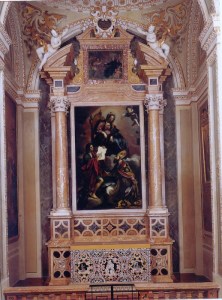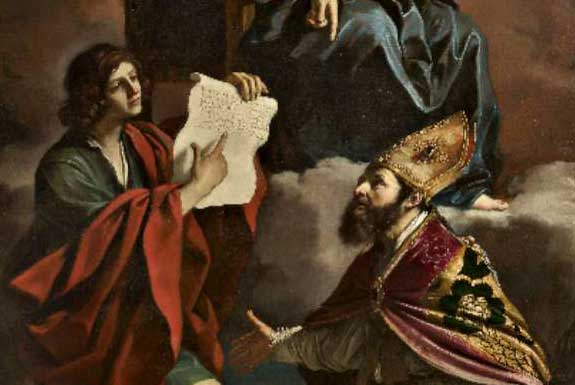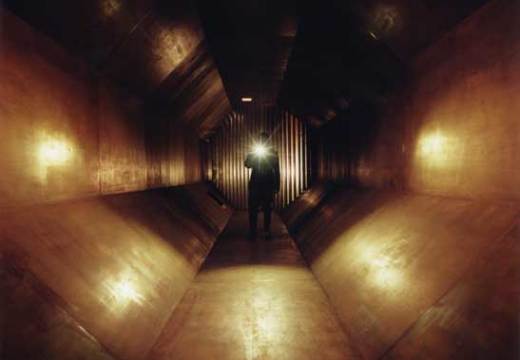Can one ever have too much art? You can certainly have too much to keep track of, too many paintings and sculptures and antiques of every kind to protect. How many times, over my 30 and more years in Italy, have I been invited to dinner, sitting in people’s homes, whether posh, middle-class or humble, only for my eye to light on some object high up on a shelf – a vase, a dish, a small bust, a curious bronze statuette – and when I remark, ‘Oh, that looks Roman,’ or Greek, or even Etruscan, a brief silence falls. ‘We bought it in Palermo,’ someone mutters. ‘I don’t think it was stolen.’ An engineer admitted keeping items of fine ceramics found while building a road in Puglia. There were few architects, he defended himself, who didn’t have items of antiquity they had found when excavating foundations. Once in Calabria I found myself dining with a man whose wife was wearing earrings I could have sworn were coins from Magna Graecia. Charming copies I assumed. Later I heard he had been imprisoned for trafficking just such objects.
Art theft is among the most common crimes in Italy. A special branch of the police force works non-stop recovering stolen artworks and investigating thousands of crimes every year. Needless to say, religious art is one of the main areas of ‘interest’ with an increase of 37 per cent in such thefts in Tuscany alone in 2013. There are simply so many churches
in Italy, far more than an increasingly secular society knows what to do with. Nor do religious paintings and sculptures arouse the same devotional reverence they did in the past. Their disappearance does not seem so scandalous. When a church closes, or is temporarily shut down for restoration work, any artwork inside becomes an easy target. In Naples in particular, scores of churches have been cleaned out in this way, with thieves frequently working on commission for collectors.
To make matters worse it is far from unusual for priests themselves to be involved. In 1996 a priest in the Vicenza area sold protected paintings and art objects to the tune of $500,000 to pay for church restoration, then reported the works as stolen to the police, presumably to collect on the insurance. He was caught. This year in the Cosenza area a priest confessed to systematically selling off artworks considered part of the country’s cultural heritage. Police charged his bishop with protecting him.
One problem is simply knowing that an artwork has been illegally removed and sold. The Ministry for Cultural Heritage long since arranged for all church art to be catalogued, but not all this information is digitised and little is available online. On the contrary, one often has to make an appointment to see state archives. So who actually knows or can remember what each church possesses, especially if the objects are not on view, or if the church, in some remote village perhaps, was closed a decade ago? Even when they are on view, there are excellent forgers at work who can place a false painting in the original frame, perhaps in poor lighting in a church rarely open to the public.
The only way to defend such an enormous heritage, would be to lure at least some tourists away from the great masterpieces and rich museums of Florence, Rome and Venice and encourage them to discover the less well known works out in the provinces. If the country’s entire cultural heritage were up online with apps to tell you what you could see in your immediate vicinity, or in every village you drove through, an atmosphere might be established that would stem this constant illegal transfer of artworks from the public to the private. But Italy has always had a problem of capitalising on its art away from the popular international tourist track. I remember spending hours almost entirely alone in provincial museums in Calabria and Puglia where fabulous objects of Greek and pre-Greek art did not seem particularly well protected. This year a major theft of Messapian archaeological remains in the village of Oria, between Taranto and Brindisi, was not even publically announced by the local administration until months after it occurred.

Guercino’s ‘Madonna with the Saints John the Evangelist and Gregory the Wonderworker’ (1639), stolen from the Church of San Vincenzo, Modena, in August this year
And what chance is there of defending the country’s heritage in the poor south when a whole altarpiece by Guercino can disappear from a church in the centre of the northern city of Modena and three small quattrocento paintings be simply lifted from the wall of the Castello Sforzesco in the very heart of Milan? Both thefts occurred in August this year. There is a constant feeling in Italy that everything is up for grabs, that at some deep level crime and the authorities are always in collusion, and that anyway, so much is going on, no one will really pay much attention if another small piece of the country’s vast art heritage disappears.
As the Italian economy plunges deeper into its double dip recession, it’s hard to find reasons for optimism.
Related Articles
On the Stolen Pompeii Fresco (Daisy Dunn)
Editor’s Letter: Italian Lessons (Thomas Marks)
Italy’s Digital Ruins (Peter Crack)
Unlimited access from just $16 every 3 months
Subscribe to get unlimited and exclusive access to the top art stories, interviews and exhibition reviews.














![Masterpiece [Re]discovery 2022. Photo: Ben Fisher Photography, courtesy of Masterpiece London](http://www.apollo-magazine.com/wp-content/uploads/2022/07/MPL2022_4263.jpg)
It’s time for the government of London to return to its rightful home